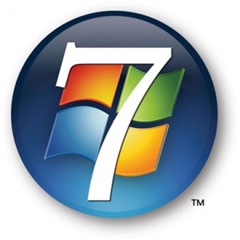Why Windows 7 and Virtual PC is so great
A great newsletter article from Microsoft.
 We all know the routine. You’re churning through e-mails or browsing your favorite tech blog and you see that new app that is going to solve that pressing issue or promises to bring world peace to your desktop. You click the link, download the bits, and 15 minutes later you’re stumbling through the interface working out if it is really going to do everything the blurb said it would. It’s normally about this time that something else pops up, so you close the app and go and deal with another distraction.
We all know the routine. You’re churning through e-mails or browsing your favorite tech blog and you see that new app that is going to solve that pressing issue or promises to bring world peace to your desktop. You click the link, download the bits, and 15 minutes later you’re stumbling through the interface working out if it is really going to do everything the blurb said it would. It’s normally about this time that something else pops up, so you close the app and go and deal with another distraction.
This routine is then repeated over the next couple of months and you start to notice that your machine is not quite as responsive as it used to be. A quick glance at Add or Remove Programs and you’re scratching your head working out where all those apps came from. The process then starts of looking at each app and working out which ones to cull and which ones to keep. Fast forward a couple of hours and, various reboots later, your machine is starting to behave like its lithe old self again. The downside though is that you have just burned through a few hours and all you have to show for it is that your machine is back to where it was a few months back.
So what’s the answer? Well, like most things in life, there are a couple of solutions. The first one is to swear off trying new apps, leave your machine in its pristine state, and never install another application again. That one not working for you? How about Windows 7 with Windows Virtual PC then?
This is the combination I love. I can install an application into a virtual machine (VM). Its shortcuts are then presented in the Start menu of the host machine. When I launch the application, it appears as if it is running on the host OS, but in reality it is safely tucked away inside the sandbox of the VM. Why do I love this? Well, once I’m done testing the app, I use the undo disk feature in Windows Virtual PC to roll the VM back to its original state and it’s like it was never there. How long does it take? Minutes. So now, instead of burning hours rebuilding or repairing my machine, I have more time to search for that world peace for the desktop application.
And here’s a tip if you want to quickly build a Windows 7 VM. Head over to http://code.msdn.microsoft.com/wim2vhd and grab the handy Windows Image to Virtual Hard Disk (WIM2VHD) Converter. It will take your Windows 7 Install.wim file and convert it to a VHD in less than 10 minutes. You can then use that VHD in a new virtual machine and it will boot straight into the Windows setup process saving you even more time!
- Gordon Ryan is technologist, consultant, trainer, and Springboard Series Technical Expert Panel (STEP) member. When not traveling, he can be found living in Sydney with his 13-year-old cattle dog. When traveling, he can be found looking for quality libations.





Recent comments
10 years 37 weeks ago
10 years 37 weeks ago
10 years 39 weeks ago
10 years 39 weeks ago
10 years 39 weeks ago
10 years 39 weeks ago
10 years 39 weeks ago
10 years 39 weeks ago
10 years 39 weeks ago
10 years 39 weeks ago